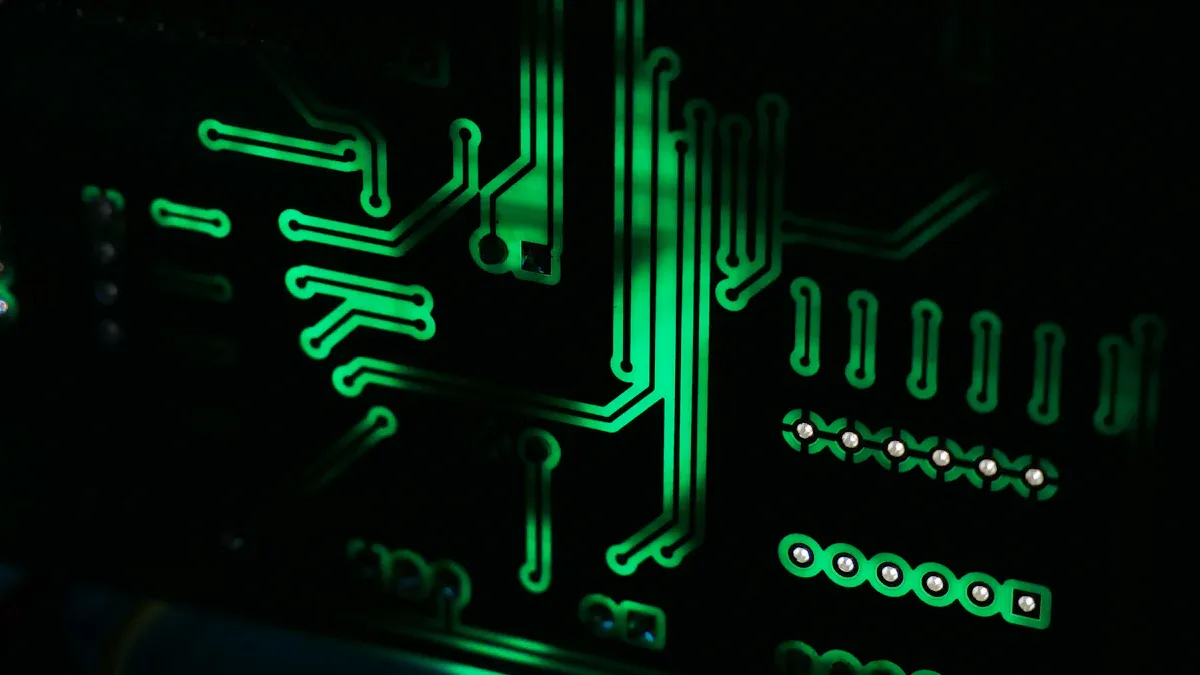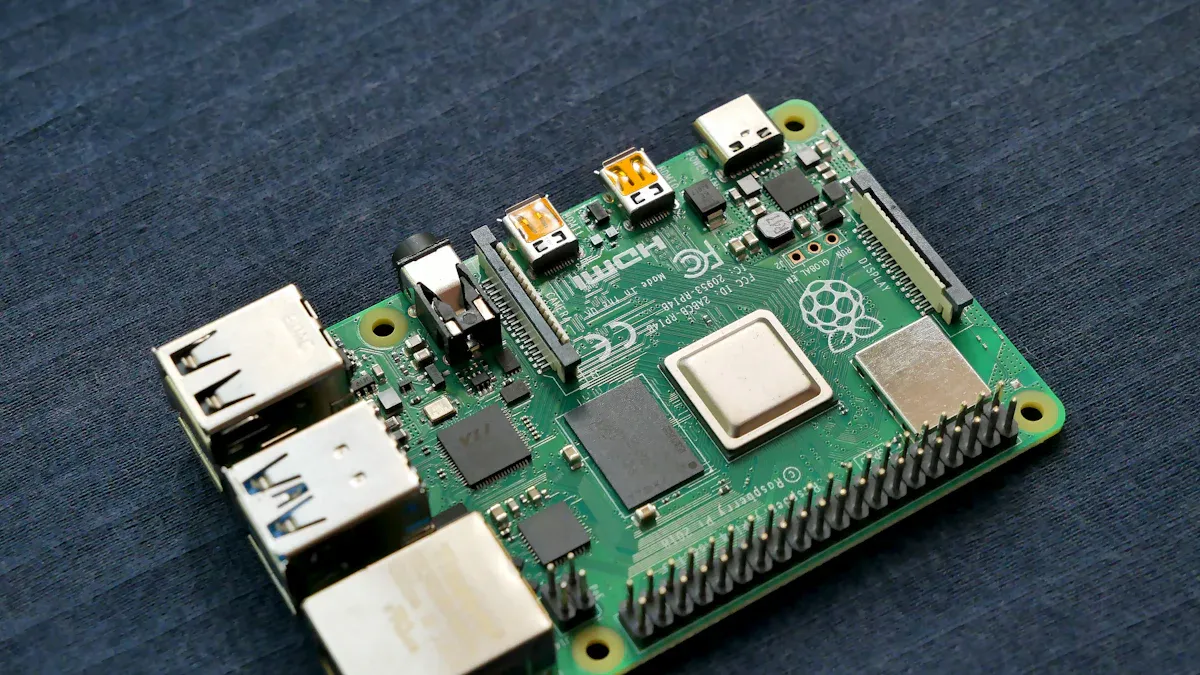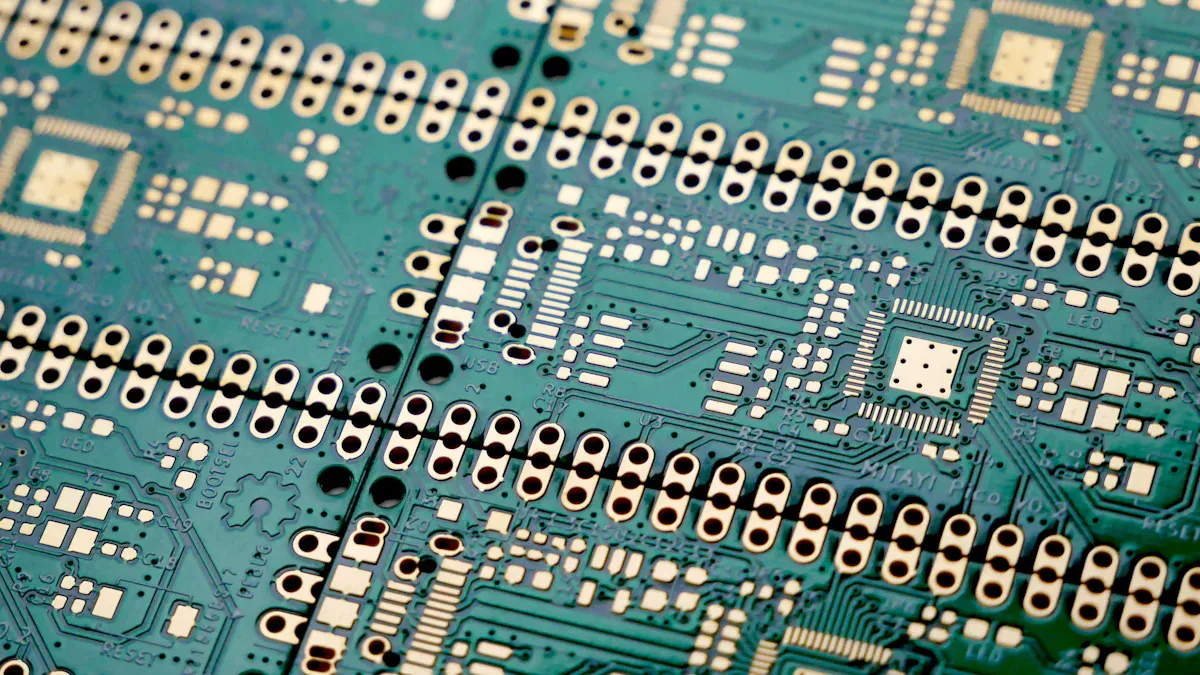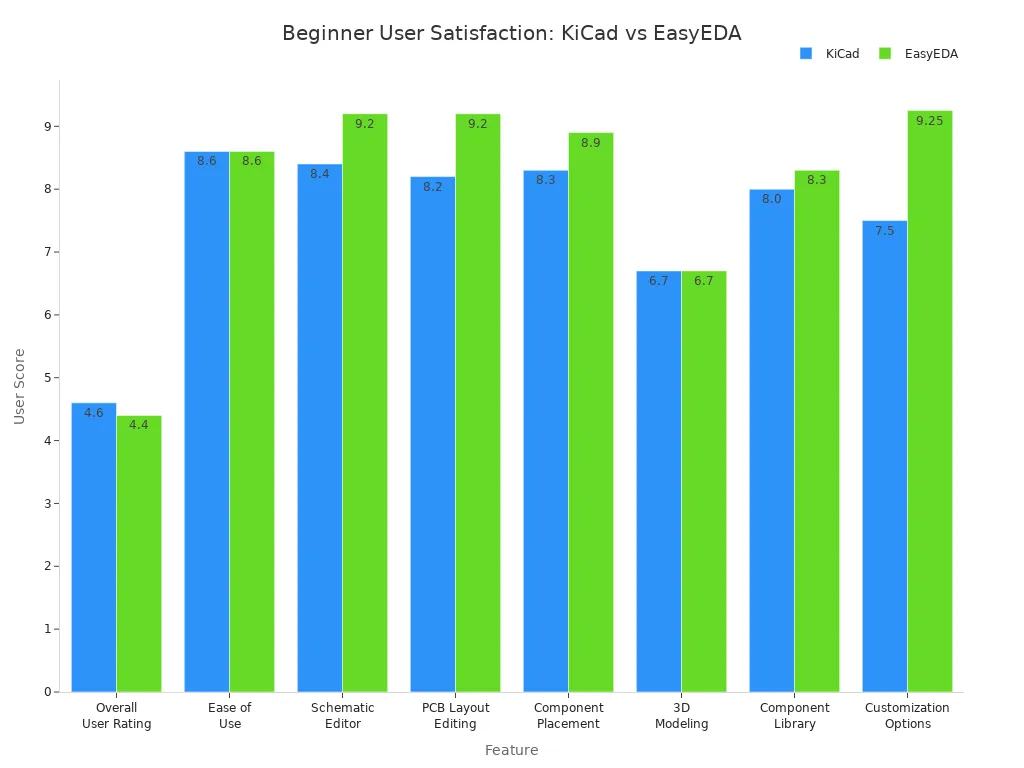How to Choose the Best PCB Board Design Software for Beginners

If you want to start with pcb board design, you have some great options like KiCad, EAGLE, EasyEDA, and DesignSpark PCB. These tools stand out because they are easy to use, free or low-cost, and have helpful communities. Many beginners run into a few common challenges:
Complex software feels overwhelming at first
High costs of pro tools make it hard to get started
Some programs need powerful computers
Picking the right tool for your project can be tricky
With the right support, you can find software that makes your first steps smooth and fun.
Key Takeaways
Choose PCB design software that feels easy and fun to use, like KiCad, EasyEDA, EAGLE, or DesignSpark PCB.
Look for tools with clear interfaces, helpful tutorials, and strong community support to solve problems quickly.
Start with free or low-cost software to learn without spending money, and upgrade only when needed.
Check that the software works on your computer and matches your project’s complexity and fabricator’s rules.
Begin with simple projects, use design rule checks, and practice regularly to build your skills confidently.
Top Choices

Recommended Software
When you start with pcb board design, you want tools that make learning easy and fun. Here are some of the best beginner-friendly options you can try:
KiCad
This free, open-source software works on Windows, macOS, and Linux. Many schools and electronics forums recommend KiCad for beginners. You get a full set of tools, including schematic capture, PCB layout, and a 3D viewer. The community keeps improving it, so you always find new features and helpful guides.EAGLE
EAGLE is popular with both hobbyists and professionals. It offers a free version for small projects. You get a drag-and-drop interface, design rule checking, and a large library of components. EAGLE also connects with Fusion 360, so you can see your designs in 3D.EasyEDA
If you want something simple and web-based, EasyEDA is a great pick. You do not need to install anything. You can design, simulate, and even order your boards right from your browser. It has a huge parts library and lots of tutorials to help you get started.DesignSpark PCB
DesignSpark PCB gives you unlimited schematic sheets and PCB layers for free. The interface is clear and easy to use. You get advanced features like design rule checking and 3D model integration. The active community and large component library make it easy to find answers and parts.CircuitMaker
CircuitMaker is free for non-commercial use. It is cloud-based and lets you collaborate with others. You get powerful design tools and access to a shared parts library.LibrePCB
LibrePCB is open-source and cross-platform. It focuses on simplicity and a clean workflow. You can use it on Windows, macOS, or Linux.ExpressPCB
ExpressPCB is simple and quick to learn. It is great for small projects and prototypes. You can design and order boards from the same tool.ZenitPCB
ZenitPCB is another free option for small projects. It has a straightforward interface and covers the basics you need for pcb board design.
Tip: Most forums and educational sites suggest starting with KiCad. It is free, open-source, and packed with features that help you learn and grow.
Why They Stand Out
You might wonder what makes these tools better for beginners. Here is a quick look at their unique features and why you might like them:
PCB Tool | Beginner-Friendly Features |
|---|---|
KiCad | Free, open-source, cross-platform; schematic capture, PCB layout, 3D viewer; strong community support; regular updates. |
EAGLE | Free for small projects; drag-and-drop interface; design rule checking; large component library; Fusion 360 integration. |
EasyEDA | Web-based; no installation needed; real-time collaboration; huge parts library; easy ordering of boards; many tutorials. |
DesignSpark PCB | Unlimited schematic sheets/layers; easy interface; design rule checking; 3D model integration; active community. |
CircuitMaker | Free for non-commercial use; cloud-based; collaborative design; shared parts library. |
LibrePCB | Open-source; cross-platform; simple workflow; clean interface. |
ExpressPCB | Simple and fast; great for prototypes; integrated ordering. |
ZenitPCB | Free; basic features; easy to learn; good for small projects. |
KiCad stands out because it is free, open-source, and works on any major operating system. You get powerful tools like a 3D viewer and Gerber viewer, which help you see your board before you build it. Many beginners and hobbyists love KiCad because it keeps things simple but still offers advanced features as you grow.
EAGLE gives you a balance between beginner-friendly tools and professional features. You can start small and move to more complex designs as you learn. The drag-and-drop interface and design rule checks help you avoid mistakes.
EasyEDA makes pcb board design easy for everyone. You can use it from any computer with a browser. The huge parts library and real-time collaboration make it perfect for group projects or classroom use.
DesignSpark PCB offers unlimited design space for free. You get advanced features without a steep learning curve. The active community and large library help you find answers fast.
Other tools like CircuitMaker, LibrePCB, ExpressPCB, and ZenitPCB give you more choices. Each one has a simple interface and enough features to get you started. You can try a few and see which one feels best for you.
Note: Many users say KiCad is the top choice for students and hobbyists. Its open-source nature and strong community make it easy to find help and resources.
Key Factors
Ease of Use
When you start with pcb board design, you want software that feels easy and welcoming. A simple interface helps you find tools fast and keeps you from feeling lost. Look for these features in beginner-friendly programs:
Clear menus and toolbars that make sense
Panels that help you switch between schematics and PCB layout
Drag-and-drop tools for placing parts
Built-in wizards for adding new symbols or components
Design rule checks that catch mistakes as you work
3D views so you can see your board before you build it
Most beginners like programs with customizable workspaces. You can set up your screen the way you like. Some tools, like EasyEDA and EAGLE, offer a gentle learning curve. You can start simple and learn more as you go. KiCad takes a little more time to learn, but it gets easier with practice. DesignSpark PCB is quick for small projects and helps you get results fast.
Tip: Try out a few programs. See which one feels easiest for you. If you get stuck, look for video guides or ask questions in user forums.
Essential Features
You want your pcb board design software to have the right tools for the job. Here are some must-have features for beginners:
Easy routing, with both auto-routing and manual options
3D visualization to check your design
Design rule checking to avoid errors
Simulation tools to test your circuits
Large component libraries and BOM (Bill of Materials) management
Cloud-based collaboration for team projects
Simple ordering and fabrication support
Some programs, like KiCad, offer basic simulation and modern routing tools. EasyEDA lets you design and order boards right from your browser. DesignSpark PCB gives you 3D viewing and easy import of parts from other programs. These features help you move from idea to finished board without extra hassle.
Budget
Cost matters when you pick pcb board design software. Many great options are free, so you do not have to spend money to get started. Here is a quick look at entry-level prices:
Software Name | Entry-Level Price | Good for Beginners? |
|---|---|---|
ZenitPCB | Free | Yes |
CircuitMaker | Free | Yes |
EasyEDA | Free | Yes |
DesignSpark PCB | Free | Yes |
DipTrace Starter | $75 one-time | Yes |
Autodesk Fusion | $84/month | More advanced |
Altium Designer | $355/month | Not for beginners |
Free versions work well for learning and small projects. Paid tools offer more features, but you can wait until you need them. Try free trials or demos before you buy anything. Make sure the software fits your needs and feels easy to use.
Note: Most beginners do not need to pay for software. Free tools like KiCad, EasyEDA, and DesignSpark PCB have everything you need to start.
Community Support
A strong community makes learning much easier. When you have questions, you want answers fast. KiCad has one of the most active user forums. People post 20 to 30 questions every day, and most get answers within hours. The community is friendly and always ready to help.
Other programs, like EasyEDA, EAGLE, and DesignSpark PCB, also have good forums and lots of guides. You can find video tutorials, step-by-step guides, and even sample projects. These resources help you solve problems and learn new skills.
Tip: Join a forum or online group for your chosen software. Ask questions, share your work, and learn from others. You will pick up tips and tricks much faster.
Compatibility
You want your pcb board design software to work on your computer. Most popular programs support Windows. KiCad and EAGLE also work on Mac OS and Linux. EasyEDA runs in your browser, so you can use it on any device with internet access.
Cross-platform support is important. It lets you switch between computers without trouble. You can share files with friends or classmates, even if they use a different system. Cloud-based tools like EasyEDA make this even easier.
Remember: Check the system requirements before you download any software. Make sure it works on your device.
PCB Board Design Comparison

Features Overview
Choosing the right software can feel tricky, so let’s break down the main features of the top beginner tools. Here’s a quick table to help you compare:
Software | Cost | Key Features for Beginners | Best For |
|---|---|---|---|
KiCad | Free | Schematic capture, PCB layout, 3D viewer, open source | Cost-conscious users, open projects |
EAGLE | Free (limited) / Subscription | Schematic & PCB editing, auto-routing, Fusion 360 integration | Hobbyists, those wanting easy learning |
EasyEDA | Free (cloud-based) | Web-based, simulation, real-time collaboration, large library | Quick prototyping, group work |
DesignSpark PCB | Free | Unlimited schematic size, 3D visualization, big libraries | Students, beginners, large designs |
KiCad gives you a full set of tools, including a 3D viewer and project manager. EAGLE stands out for its easy interface and Fusion 360 link. EasyEDA works right in your browser, so you don’t need to install anything. DesignSpark PCB lets you make big designs without limits on schematic size.
Tip: Free versions usually cover what you need for most school or hobby projects, but they may limit board size or advanced features.
Pros and Cons
Every pcb board design tool has its strengths and weaknesses. Here’s what you should know:
Pros:
KiCad is free, open source, and works on many systems. You get strong community support and no limits on board size.
EAGLE is easy to learn and has lots of tutorials. It connects with Fusion 360 for 3D work.
EasyEDA is simple, cloud-based, and great for quick projects. You can work with friends in real time.
DesignSpark PCB gives you unlimited schematic space and a big parts library.
Cons:
KiCad can feel hard to learn at first. The interface sometimes looks different between tools.
EAGLE’s free version limits your board size and layers. It also lacks some advanced simulation tools.
EasyEDA needs a good internet connection. You can’t use it offline much.
DesignSpark PCB has fewer advanced features and a smaller user community.
Note: Free tools may not have all the pro features, but they are perfect for learning and basic pcb board design.
Final Choice
Match to Your Needs
Choosing the right pcb board design software depends on what you want to build and how you like to learn. Start by thinking about your project. Is it a simple LED circuit or something more complex? If you plan to make bigger or multi-layer boards, you need software that can handle those features. Before you begin, check with your board fabricator to get the layer stackup and make sure your software supports it. Always match the copper weight and materials to your project’s needs so you don’t have to redesign later.
Here’s a quick way to match software to your needs:
Decide how complex your project is. Simple projects work well with EasyEDA or ZenitPCB. For bigger designs, KiCad or EAGLE might fit better.
Ask your fabricator for their design rules. Enter these rules into your software to avoid errors.
Start with basic projects and move to advanced tools as you learn more.
Look for software that lets you set up manufacturing rules and check for mistakes.
Make sure the software supports the materials and standards you want to use.
Tip: Pick a tool that matches your learning style. If you like step-by-step guides, choose software with lots of tutorials and community support.
Getting Started Tips
Ready to jump in? Here are some steps to help you start strong with pcb board design:
Set a clear goal for your first project. Simple circuits like blinking LEDs are perfect for learning.
Gather datasheets and pick easy-to-find parts.
Draw a block diagram to organize your ideas.
Use the software’s schematic editor to place and connect parts. Label everything clearly.
Run electrical rule checks to catch mistakes early.
Move to the PCB layout. Place parts with enough space for soldering and airflow.
Route traces carefully. Use wider traces for power and avoid sharp angles.
Run design rule checks before finishing.
Export your files in Gerber format and review them with a viewer.
Try out tutorials or online courses. For example, “The Complete Course of KiCad 2023” on Udemy helps you learn everything from basics to advanced skills.
Join forums or online groups. You can ask questions and share your progress.
Practice with small projects and build up your skills over time.
Remember: Start simple, use the resources around you, and don’t be afraid to ask for help. Every expert started as a beginner!
You have some great beginner-friendly options like KiCad, EasyEDA, EAGLE, and DesignSpark PCB. Each one stands out for user-friendliness, strong community support, and helpful features. Check out this quick table to see what matters most:
Factor | Why It Matters for Beginners |
|---|---|
User-Friendliness | Easy to learn and boosts your confidence |
Accessibility | Free or open-source, so you can start right away |
Community Support | Forums and guides help you solve problems fast |
Integrated Tools | Everything you need in one place |

Pick the tool that fits your style and goals. When you start with the right software, you make learning easier and more fun. You can do this!
FAQ
What is the easiest PCB design software for beginners?
You might find EasyEDA or KiCad the easiest to start with. Both have simple interfaces and lots of tutorials. You can try both for free and see which one feels better for you.
Can I design a PCB without any electronics experience?
Yes! You can start with simple projects like LED circuits. Most beginner software has guides and templates. You will learn as you go. Don’t worry if you make mistakes—everyone starts somewhere.
Do I need a powerful computer for PCB design?
Not always. EasyEDA runs in your browser, so any computer works. KiCad and EAGLE run on most modern laptops. If you want to use 3D views, a faster computer helps, but it’s not required for basic designs.
How do I get help if I get stuck?
You can join forums, watch YouTube tutorials, or read the software’s help guides. Most communities answer questions quickly. Don’t be shy—ask for help when you need it!
Can I order real PCBs from my design?
Yes! Many tools like EasyEDA and KiCad let you export files for PCB manufacturers. Some, like EasyEDA, even have a built-in order button. You can turn your design into a real board with just a few clicks.
See Also
Reviewing Leading FPGA Boards From Major Manufacturers
Selecting The Best Low-Power MCU For Your Project
Understanding Key Differences Between Evaluation And Development Boards
Tips For Picking The Ideal SOT23-6 Buck Regulator Chip
Best Three Synchronous Buck Converter Chips To Consider In 2025
